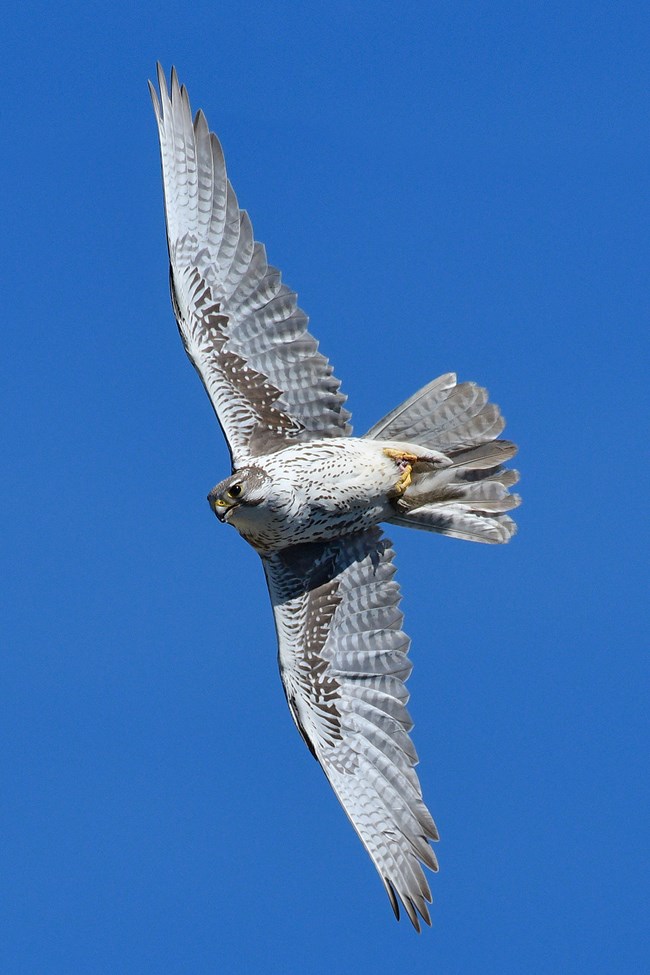Last updated: January 3, 2020
Article
Researchers Analyze Prairie Falcon Genetics

NPS / Gavin Emmons
December 2019 - In Pinnacles National Park, prairie and peregrine falcons’ outward similarities are on full display. Both species nest in the park’s cliff cavities and eat small mammals, birds and reptiles from the surrounding area. But how similar are they genetically? In addition, the same prairie falcons tend to return to the same places to nest in Pinnacles year after year. Are these birds part of a genetically distinct local population, or is there enough interbreeding among prairie falcons throughout the West to make them effectively one big breeding population? Last year, researchers published a study in BMC Genomics that tackles such questions by analyzing a full prairie falcon genome and the species’ population genetics for the first time.
Comparing the prairie falcon genome to those of other falcons, the authors found that prairie and peregrine falcons do not appear to be sister species as some earlier research had suggested. Rather, peregrine falcons appear to be more closely related to falcons of the subgenus Hierofalco than to prairie falcons. The researchers also looked at a subset of genetic markers for over 100 prairie falcons from California and Idaho, including 32 from Pinnacles National Park. From these, they found evidence that the California and Idaho prairie falcons are effectively a part of one large population. Despite their usual fidelity to a particular area, long-distance dispersals happen often enough to allow gene flow. One important implication of this is that local prairie falcon conservation measures may actually benefit the species throughout its range.

NPS / Gavin Emmons
Still, the authors note that studying more genetic markers, and more birds from more parts of the species’ range, could unlock even more information that could prove useful for prairie falcon conservation. Check out the full article to learn more.
